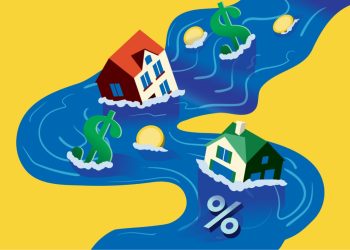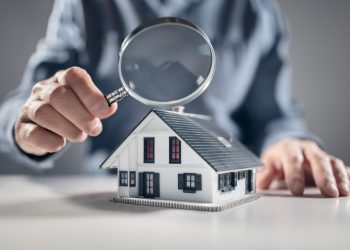On the heels of Pride Month, pundits and advocates are reflecting on what the future could hold for the LGBTQ+ community in real estate as buyers pursue their slice of the American Dream.
While there is a consensus that progress has been made in the sector concerning diversity, equity, and inclusion (DEI), sources tell RISMedia that there is still more work to move the needle in the positive direction.
“I truly believe that the LGBTQ+ community can change the economic outlook,” says Ryan Weyandt, CEO of the LGBTQ+ Real Estate Alliance, one of the nation’s leading LGBTQ+ trade organizations.
According to 2021 U.S. census data reported by Yahoo Finance, the LGBTQ+ community’s economic spending power climbed to $1.4 trillion in the U.S.—up from $800 billion
Impressive as that may be, Weyandt notes that the LGBTQ community only accounted for 12% of home purchases in that past year. As it stands, the homeownership rate in the LGBTQ+ community is 49%, which falls well below the national average of 65%.
“If we were responsible for 12% of the home purchases in 2021 and we have that much purchase potential, that tells me that there is a red flag and something is not computing into purchasing homes, and we’re trying to figure out why that is,” Weyandt says.
Housing affordability may be a universal challenge plaguing buyers across all demographics. However, data in the LGBTQ+ Real Estate Alliance’s second annual report indicates that discrimination and the fear of discrimination are still prevalent hurdles for buyers in the LGBTQ+ community.
In its report titled “Discrimination And Its Impact On LGBTQ+ Community: Real Estate Professionals And Consumers,” the surveyed Alliance members indicated that fear of housing discrimination (12.2%) and the ability to find the “right” neighborhood (11.3%) were among some of the most significant barriers to homeownership.
Those factors followed several others associated with affordability hurdles—home prices, lack of down payment funds—and understanding the buying process.
The report also found that 1 in 5 (20.7%) surveyed Alliance members claimed that real estate agents were the leading culprit in how housing discrimination occurs against the LGBTQ+ real estate home buyer.
“If an LGBTQ couple drives through a neighborhood on their own and sees flags that are counterintuitive to progress for the LGBTQ community, they are probably not going to want to live there,” Weyandt says.
A looming challenge for LGBTQ+ people is that there still aren’t permanent federal protections against discrimination. In 27 states, no explicit statewide laws protect people from discrimination based on sexual orientation or gender identity in employment or housing and public accommodations.
Plans to amend the Fair Housing Act to include said protection appeared to progress in 2021 as lawmakers eyed the Equality Act passing last spring. However, the legislation stalled after passing the House.
“Contextually, it’s a much more bleak picture and a much sadder story than that,” Weyandt says. “The legislation has been floating around since the 70s, and it’s never had its day in the Senate.
“We really thought it was going to get its day in session on the floor for a vote this year, and it is currently stalled in committee,” Weyandt continues, adding that the Alliance is skeptical that the legislation will make it to a vote in the Senate this year.
Despite another year of halted activity on the Equality Act, some steps have been made in the right direction. Early last year, President Joe Biden signed an executive order extending protections based on sexual orientation and identity under the Equal Rights Act.
The order helped catalyze a similar measure implemented by the U.S. Department of the Housing and Urban Development (HUD) aimed explicitly at housing. The rule/law offers temporary protections and a two-year postmortem where folks can report cases of discrimination or alleged discrimination that HUD can investigate and prosecute if they find grounds.
President Biden also followed up on his 2021 executive order with another that he signed last month to combat unlawful discrimination and eliminate disparities that harm against members of the LGBTQ+ community. The created goals for many government agencies—HUD included—to address specific topics independently.
As part of the mandate, HUD was tasked with identifying housing issues, providing guidance and creating training under a goal-specific timeline.
While these efforts address discrimination against LGBTQ+ members to an extent, Weyandt says the executive order is a “bandaid on a dam.”
“The unfortunate part of that is that it is an executive order,” he says, adding that he is skeptical of the longevity beyond the current administration.
The path forward
Understanding how buyers navigate the housing market is an essential aspect of every real estate professional’s playbook—especially as the market is cooling off. The same goes for LGBTQ+ consumers, according to Lisa Herceg, director of marketing research for the National Association of REALTORS® (NAR).
Based on data collected in NAR’s 2021 Profile of LGBTQ Home Buyers and Sellers, Herceg notes that many LGBTQ buyers—42% of respondents—were first-time homebuyers, compared to just 32% of non-LGBTQ buyers.
“They’re also more likely to purchase again in the future,” Herceg says. “LGBTQ buyers and sellers expect to stick around in their current homes for ten years versus 15 for non-LGBTQ.”
Along with regularly partnering with the Alliance, NAR has taken a bullish stance on improving DEI in the industry while addressing implicit bias in recent years through its Fair Housing ACT initiative.
Herceg points towards NAR’s Fairhaven program as an example of some of the resources the association has implemented recently to mitigate bias across all demographics.
“For REALTORS®, it covers Fair Housing rules and experiences across different subgroups, not just discrimination faced by race, ethnicity and nationality but also discrimination faced by LGBTQ+ persons,” Herceg says. “I have REALTORS® say that was the discrimination that surprised them the most, that they didn’t think that was happening, so that’s been eye-opening for them.
Since launching two years ago, the Alliance has prioritized educating and advocating for the LGBTQ+ community in the housing market.
According to Anita Blue, vice president of the Alliance, part of that effort has aimed to build partnerships with more prominent real estate brands.
“If consumers see that we are connected to a RE/MAX or eXp Realty, they might feel more confident with going through one of those agencies just to know that they support LGBTQ+,” she says.
Blue adds that many people from the community struggle with finding agents they can trust. She tells RISMedia that the Alliance has encountered several consumer-facing incidents of discrimination.
“Some people have been hurt by that, and they shy away from it,” she says. “Sometimes it’s a personal belief, but I think that when we run into that and report it, we will curtail that because of a lot that has not been reported.”
According to Liz Gehringer, president of Coldwell Banker Affiliate Business and COO of Coldwell Banker Real Estate LLC, addressing and mitigating the concerns of LGBTQ+ buyers and sellers in the market takes a companywide effort.
“Buying a home in today’s market has been competitive for many, but unfortunately, members of the LGBTQ+ community can often face more struggles as they search for their dream home,” Gehringer says, adding that the brand has opted to partner with the Alliance.
She says that Coldwell Banker has expanded its network of agents with DEI in mind, bringing in people from diverse backgrounds to work with their clients.
The company is accomplishing this through several initiatives like Coldwell Banker’s Inclusive Ownership Program, which aims to support diverse broker/owners in their first two years.
As a result, Gehringer says the program is breaking down barriers to entry in the industry and ensuring that communities feel represented by their real estate agents.
“While we strive to support the LGBTQ+ community and continue to support their path to homeownership, we understand there is still work to be done, and we look forward to helping in all the ways that we can,” Gehringer says.












